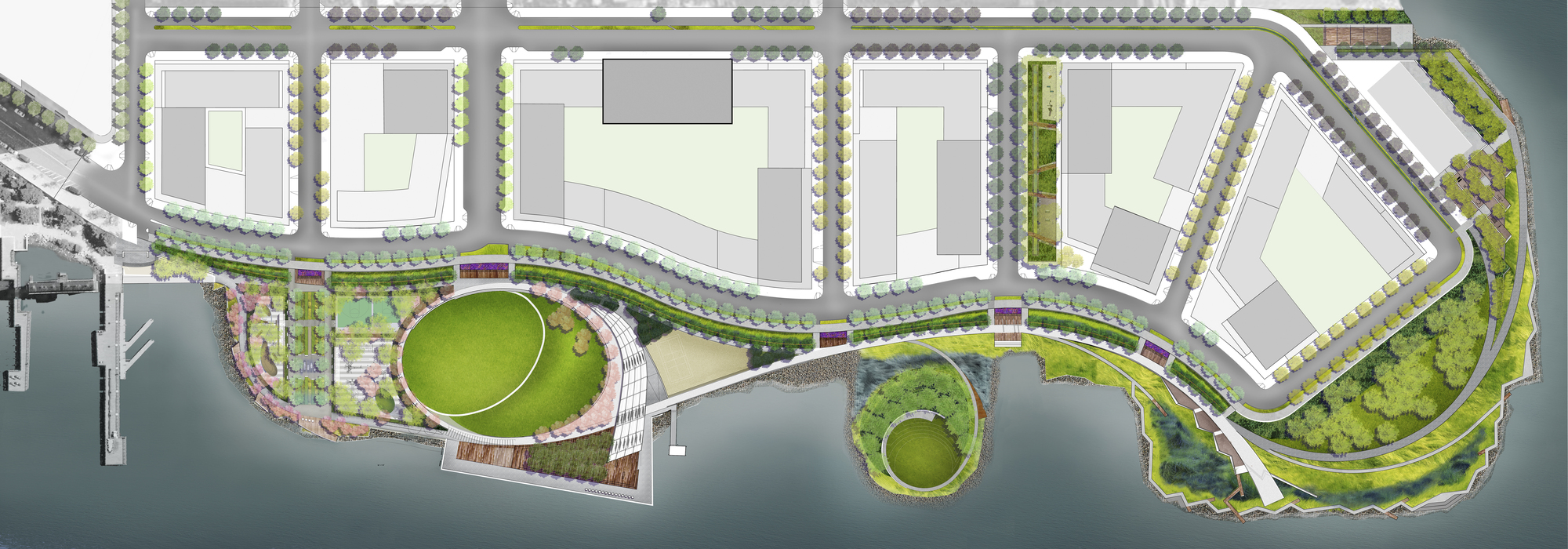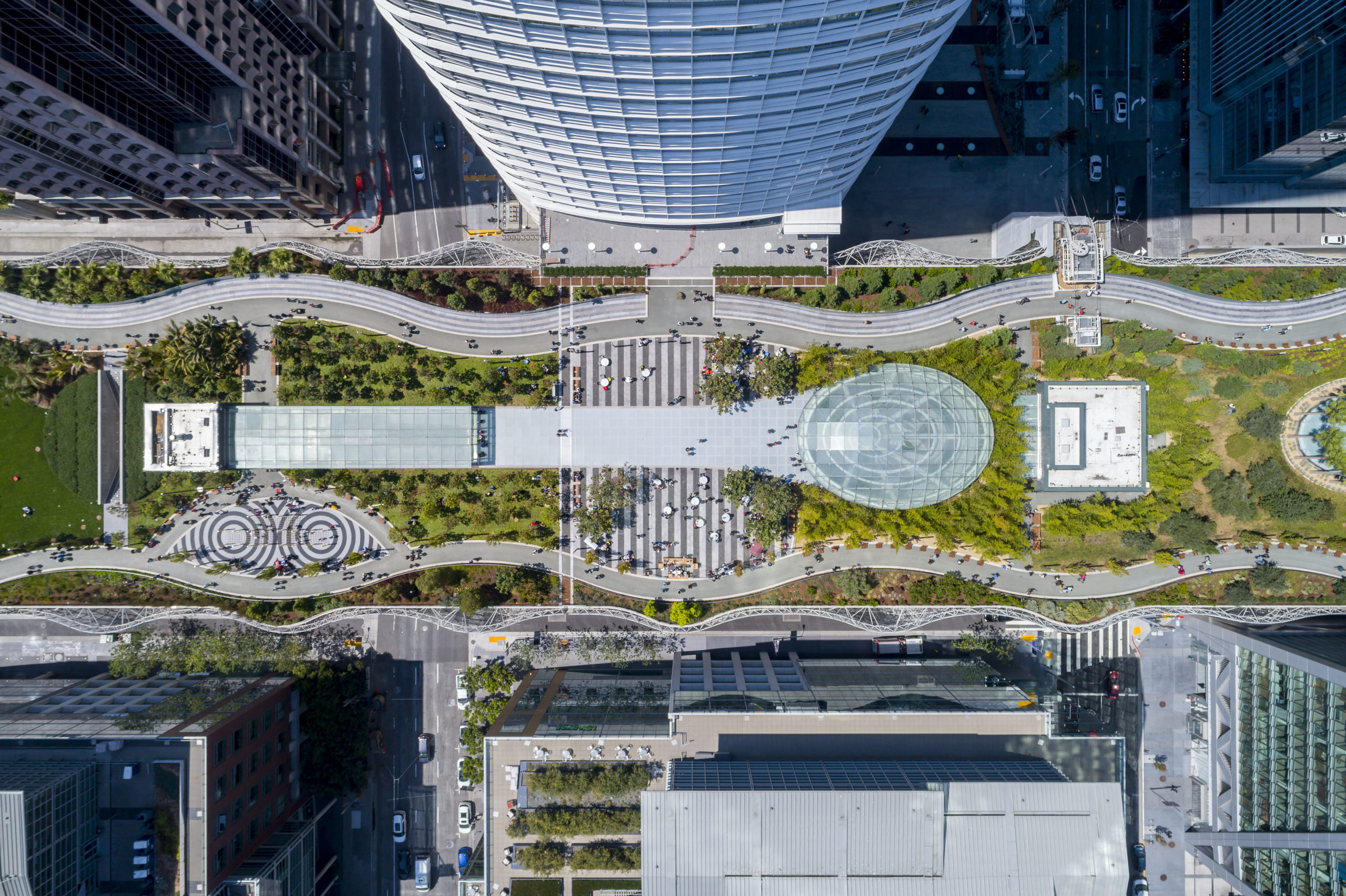Got a project that’s too contemporary for your client? Submit your conceptual works, images and ideas for global recognition and print publication in the 2025 Vision Awards, launching this spring! Stay updated by clicking here.
Great public parks have become cornerstones of culture. As some of the most important spaces in a community, they celebrate gathering and bringing people together. Across diverse development, environmental and social conditions, public parks can be found around the world. Framing views, revealing history and making room for recreation, designers of these parks look for opportunities to tell new stories of a city and its future. Not only do these parks create new perspectives, but they also contribute to a shared civic identity.
The success of a public park depends on how it connects to its surroundings and the way that it is experienced. Landscape architects and designers understand these elements and their relationship to time, scale and materials. Taking a survey of public parks from around the world, the following projects highlight how we experience parks through site plan drawings. Not only do these drawings illustrate how people flow through and around a park, but also show ideas of material change, shadow and light, as well as programming. Giving a glimpse into public life, they each showcase the intersection between design, landscape and people.
Hunter’s Point South Waterfront Park
By SWA/Balsley and WEISS/MANFREDI, Queens, NY, United States


The Hunter’s Point project reimagines a brownfield against the backdrop of the Manhattan skyline. The design embraces diverse historical identities and serves as a new model for waterfront resilience, with a “soft” approach to protecting neighborhoods from floodwaters. The East River’s tidal currents demanded a protective revetment to ensure a successful marsh establishment. A “soft” engineered causeway offers a walk along the river’s edge and protects nearly an acre of newly-established in-water habitat. The design remediates the site’s contaminated landfill and leverages it into sculpted grassland and iconic park.
West End Square
By James Corner Field Operations, Dallas, TX, United States
Popular Choice Winner, 10th Annual A+Awards, Public Parks & Greenspaces
Songzhuang Micro Community Park
By Crossboundaries, Tongzhou, Beijing, China
Popular Choice Winner, 10th Annual A+Awards, Architecture +Community
The Songzhuang Art District has seen increased development in recent years, with more than 5,000 artists living in its grounds and 35 large and medium-sized fine arts galleries. The area has become one of the largest gathering spots of contemporary artists in China, if not in the world. Understanding the challenge of offering versatile and inclusive communal facilities, a masterplan competition was organized in 2018. In this framework, Crossboundaries was commissioned to regenerate a linear streetscape adjacent to a parking lot close to the Xiaopu Cultural Plaza into a lively outdoor community park. This project is the first realized design of more to come that will follow the lead of designing for a communal spirit.
Tainan Spring
By MVRDV, Tainan, Taiwan
Jury Winner, 10th Annual A+Awards, Architecture +Urban Transformation
Klyde Warren Park
By OJB Landscape Architecture, Dallas, TX, United States
Klyde Warren Park serves as an important pedestrian connection between the Central Business District, Uptown and the burgeoning Arts District in downtown Dallas. Built over the existing Woodall Rodgers Freeway, the natural beauty of the park conceals an extensive structural deck below that accommodates an extensive array of existing utilities, stormwater infrastructure and the soil volume necessary to support the park’s many trees. The park is organized by a sweeping pedestrian promenade that draws visitors past botanical gardens, a children’s park with interactive water features, the reading room, a restaurant and an event lawn with a signature performance pavilion.
Navy Yard Central Green
By James Corner Field Operations, Philadelphia, PA, United States
Popular Choice Winner, 2016 A+Awards, Public Park
Zaryadye Park
By Diller Scofidio + Renfro, Moscow, Russia
Salesforce Transit Center Park
By PWP Landscape Architecture and Pelli Clarke & Partners, San Francisco, CA, United States
Designed to be a true hub and multi-modal transit center, Salesforce Park is located in downtown San Francisco. The design links eleven transit systems and connects the city to the region, the state and the nation. The project includes a 5.4-acre rooftop park that has become the central public open space during the growth of a new mixed-use neighborhood around it. Salesforce Park brings nature, horticulture, art and a rich mixture of botanical and active programmed experiences to the city’s downtown while tying into the sustainability program of the building that sits below it. The rooftop park serves as an essential element in the growth of the new East Cut neighborhood in San Francisco and provides high quality public open space.
Got a project that’s too contemporary for your client? Submit your conceptual works, images and ideas for global recognition and print publication in the 2025 Vision Awards, launching this spring! Stay updated by clicking here.
